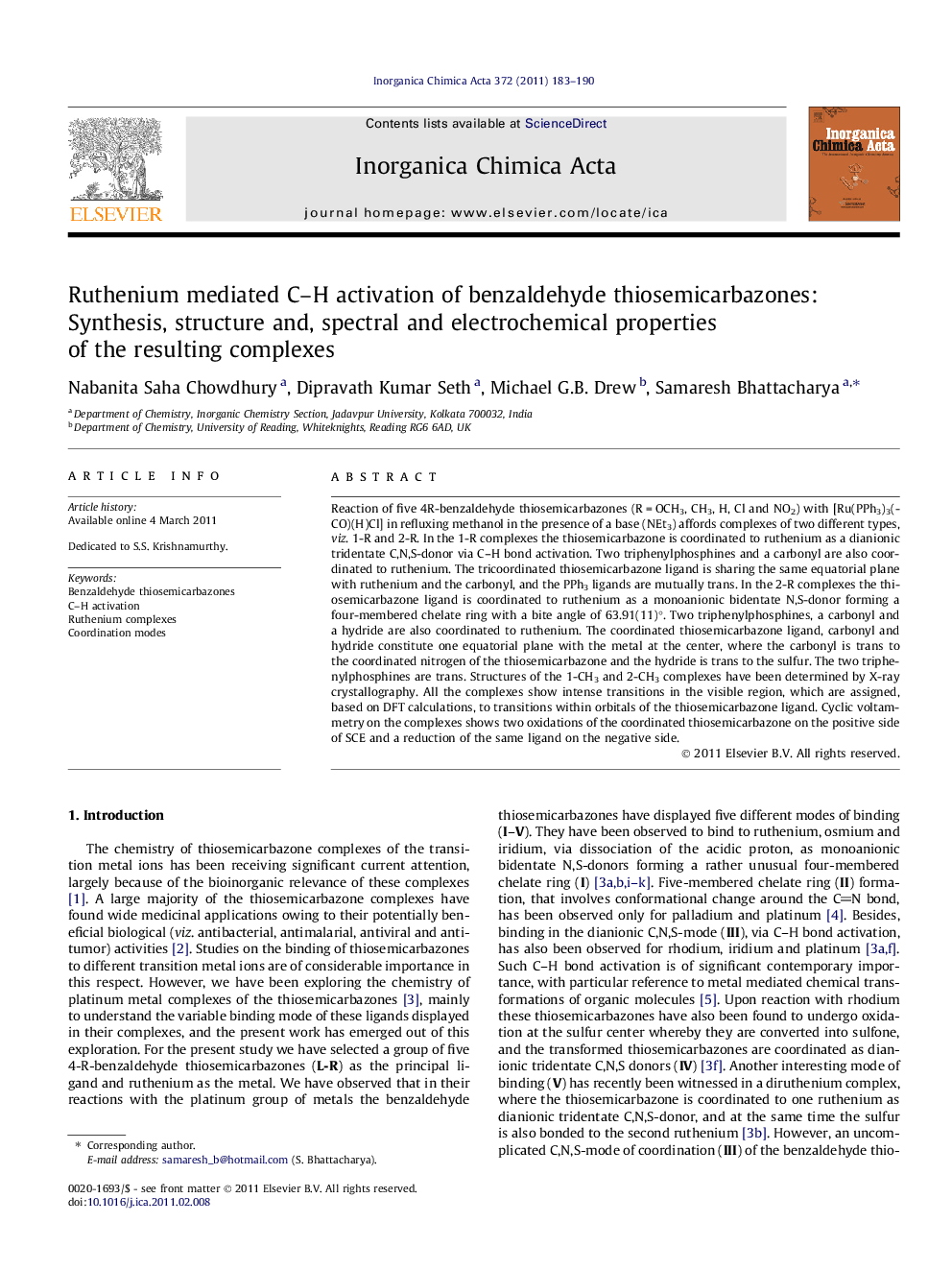| کد مقاله | کد نشریه | سال انتشار | مقاله انگلیسی | نسخه تمام متن |
|---|---|---|---|---|
| 1308889 | 975188 | 2011 | 8 صفحه PDF | دانلود رایگان |

Reaction of five 4R-benzaldehyde thiosemicarbazones (R = OCH3, CH3, H, Cl and NO2) with [Ru(PPh3)3(CO)(H)Cl] in refluxing methanol in the presence of a base (NEt3) affords complexes of two different types, viz. 1-R and 2-R. In the 1-R complexes the thiosemicarbazone is coordinated to ruthenium as a dianionic tridentate C,N,S-donor via C–H bond activation. Two triphenylphosphines and a carbonyl are also coordinated to ruthenium. The tricoordinated thiosemicarbazone ligand is sharing the same equatorial plane with ruthenium and the carbonyl, and the PPh3 ligands are mutually trans. In the 2-R complexes the thiosemicarbazone ligand is coordinated to ruthenium as a monoanionic bidentate N,S-donor forming a four-membered chelate ring with a bite angle of 63.91(11)°. Two triphenylphosphines, a carbonyl and a hydride are also coordinated to ruthenium. The coordinated thiosemicarbazone ligand, carbonyl and hydride constitute one equatorial plane with the metal at the center, where the carbonyl is trans to the coordinated nitrogen of the thiosemicarbazone and the hydride is trans to the sulfur. The two triphenylphosphines are trans. Structures of the 1-CH3 and 2-CH3 complexes have been determined by X-ray crystallography. All the complexes show intense transitions in the visible region, which are assigned, based on DFT calculations, to transitions within orbitals of the thiosemicarbazone ligand. Cyclic voltammetry on the complexes shows two oxidations of the coordinated thiosemicarbazone on the positive side of SCE and a reduction of the same ligand on the negative side.
The 4R-benzaldehyde thiosemicarbazones (R = OCH3, CH3, H, Cl and NO2) undergo facile C–H bond activation upon reaction with [Ru(PPh3)3(CO)(H)Cl] in refluxing methanol in the presence of a base (NEt3) and affords a group of organoruthenium complexes (1-R) along with complexes of another type (2-R).Figure optionsDownload as PowerPoint slideResearch highlights
► [Ru(PPh3)3(CO)(H)Cl] can mediate C-H bond activation of benzaldehyde thiosemicarbazones.
► Another group of complexes, with the thiosemicarbazones bound in the N,S-mode, are also obtained.
► Coordination mode of thiosemicarbazone in the initial step dictates the C-H bond activation.
Journal: Inorganica Chimica Acta - Volume 372, Issue 1, 15 June 2011, Pages 183–190